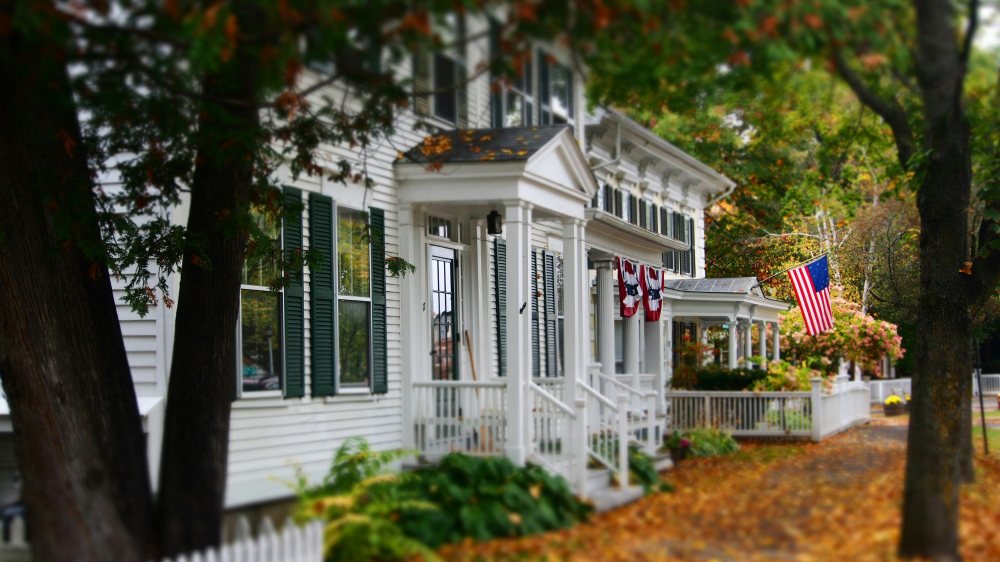Tree roots are an essential part of the natural ecosystem. They stabilize trees, absorb water, and help to maintain the environment. However, these roots can become a significant problem when they extend too close to homes. From structural damage to compromised utility lines, understanding how tree roots can affect your property is crucial for homeowners.
Cracks in Foundations
One of the most serious problems caused by invasive tree roots is damage to a home’s foundation. As trees grow, their roots can expand outward in search of water and nutrients. If the soil around your foundation is compacted or lacks moisture, roots may push against the foundation walls, leading to small cracks. Over time, these minor cracks can widen, causing extensive damage that can be costly to repair.
Tree species known for aggressive root systems, such as willow, oak, and poplar, are more likely to cause foundational issues. Preventing this kind of damage requires proactive measures, including selecting tree species that are suitable for residential areas and planting them at a safe distance from structures.
Damage to Driveways and Sidewalks
Tree roots don’t just threaten the foundation; they can also damage driveways, sidewalks, and patios. When roots grow under paved surfaces, they can lift and crack the concrete or asphalt, creating uneven surfaces. Not only is this unsightly, but it also poses a tripping hazard for anyone walking over it.
This type of damage is often seen in older neighborhoods with mature trees. Homeowners can manage the issue by installing root barriers when planting new trees and opting for flexible materials for pathways and driveways. Repairing damaged pavements may involve replacing the affected sections or trimming back the roots without compromising the tree’s health.
Sewer Lines Root Issues
Perhaps one of the most overlooked yet significant issues caused by tree roots is their intrusion into underground utility lines. Sewer pipes, particularly those made from clay or older materials, are highly susceptible to root invasion. As roots search for moisture, they can find their way into even the smallest cracks in the pipes. Once inside, the roots expand and block the flow of wastewater, leading to slow drainage or complete blockages.
If left untreated, this can escalate to more severe problems, such as pipe bursts or backflow into the home. Homeowners facing issues with tree roots in sewer lines often need professional repair and replacement services to remove the blockages and restore the plumbing system. To prevent this, regular inspections using camera technology can detect potential intrusions early, allowing for quick action before serious damage occurs.
Structural Damage to Basements and Crawl Spaces
Tree roots can also disrupt basements and crawl spaces. When roots grow under the foundation, they can cause the soil to shift and settle unevenly. This can lead to gaps in the structure and weaken the integrity of basement walls or support beams.
The damage to these areas might not be immediately visible but can manifest as water seepage, mold growth, or compromised structural stability over time. Homeowners should regularly check basements and crawl spaces for signs of root intrusion and consult an expert if they notice damp spots or cracking.
Interference with Plumbing Systems
Beyond sewer lines, tree roots can also cause issues for other types of underground plumbing. Water supply lines can be penetrated by aggressive roots that are drawn to the moisture they provide. This can lead to reduced water pressure, leaks, and expensive repairs. Copper and PVC pipes, although more resilient, are not immune to root damage.
To safeguard plumbing systems, consider installing root barriers or using reinforced pipe materials. Additionally, keeping trees pruned and ensuring they receive sufficient water from other sources can deter roots from venturing too far.
Damage to Outdoor Structures
Garden sheds, detached garages, and other outdoor structures can also be affected by tree root growth. When roots grow beneath these structures, they can push up flooring, crack the foundation, and cause misalignment of doors and windows. This damage can be especially concerning if the structure is used frequently or houses valuable equipment.
Repairing these types of issues may involve reinforcing the foundation or relocating the structure entirely. When planning landscaping projects, avoid planting trees too close to these structures and use root barriers as a preventive measure.
Compromised Landscaping
Roots can disrupt lawns, gardens, and other landscaping elements. They may emerge from the ground, creating unsightly lumps that make mowing difficult and pose a tripping hazard. Additionally, roots can compete with grass and other plants for nutrients and water, leading to sparse or dying vegetation.
For a well-maintained yard, choose trees with less aggressive root systems, and plant them strategically to avoid interference with landscaping. Raised garden beds and mulching can also help reduce the competition between tree roots and other plants.
Impact on Utility Lines
Tree roots can also interfere with underground utility lines beyond plumbing. Electrical and gas lines may be compromised by root intrusion, especially if they are buried at shallow depths. Damage to these lines can lead to power outages or gas leaks, both of which are safety hazards for your home.
To prevent this, ensure that utility lines are installed at a safe distance from large trees. Additionally, professional arborists can offer advice on how to manage tree growth near utility lines without sacrificing the tree’s health.
Preventive Measures and Solutions
Managing tree roots involves a combination of prevention and proactive maintenance. Homeowners can take several steps to protect their property:
-
- Plant Trees Wisely: Choose tree species with non-invasive root systems and plant them far enough from your home and any outdoor structures.
- Install Root Barriers: Use physical barriers to direct roots downward and away from vulnerable areas.
- Regular Inspections: Schedule inspections to monitor tree growth and identify any early signs of root intrusion.
- Maintain Proper Watering: Ensure trees receive adequate water, so their roots don’t need to seek out other sources.
For serious cases where damage has already occurred, consult with professionals to explore repair and mitigation options. Proper tree care, combined with preventive measures, can help homeowners enjoy the benefits of trees while minimizing the risks associated with root intrusion.
By staying informed and vigilant, homeowners can maintain a balance between preserving nature and protecting their property.
Want to know more ways to manage your work and personal life?
Snag a free workbook and get inspiration on all the ways to love your life even more.
>>Click Here to Discover Additional Strategies for Managing Stress, Anxiety, and Burnout <<









